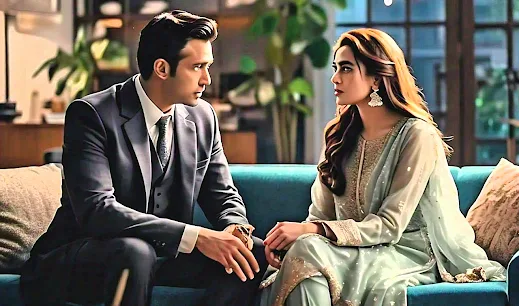Cultural Reflections: How K-Dramas and Pakistani Films Portray Tradition and Modernity

Introduction: Film and television are powerful mirrors reflecting the cultural and societal dynamics of their times. Korean dramas (K-dramas) and Pakistani films offer rich portrayals of their respective cultures, blending tradition with modernity in fascinating ways. This blog explores how these two cinematic worlds depict cultural values, traditions, and contemporary issues, providing insights into the societies they represent.
1. Traditional Values vs. Modern Perspectives in K-Dramas
Family Dynamics and Conflicts: K-Dramas often highlight the importance of family and the traditional values associated with it. Shows like “Reply 1988” and “My Mister” explore family bonds and generational conflicts. These dramas showcase the respect for elders and the importance of familial duty, while also addressing modern challenges and evolving relationships within families.
Social Hierarchies and Class: K-Dramas frequently address social hierarchies and class distinctions. For instance, “Descendants of the Sun” portrays the military’s respect and authority, while “Sky Castle” delves into the pressures of social status and academic success. These shows reflect South Korea's high value on education, success, and social standing, while also critiquing and exploring these pressures.
Romantic and Social Norms: K-Dramas often blend traditional and modern views on romance and relationships. “Crash Landing on You” combines the traditional aspects of familial expectations with contemporary themes of cross-border love. The portrayal of relationships challenges traditional norms while celebrating the evolution of modern love.
2. Cultural Reflections in Pakistani Cinema
Family and Social Structure: Pakistani films frequently depict traditional family values and societal norms. Movies like “The Legend of Maula Jatt” and “Chakkar” often highlight the significance of family honor, respect for elders, and societal expectations. These films portray how traditional values influence personal decisions and relationships.
Gender Roles and Empowerment: Recent Pakistani films have begun to address gender roles and women’s empowerment more directly. Films like “Joyland” and “Meri Guriya” tackle issues of gender inequality and women’s rights, reflecting a shift towards modern perspectives while still acknowledging traditional societal structures.
Cultural Heritage and Modernity: Pakistani cinema often celebrates cultural heritage through its storytelling, music, and visual aesthetics. Movies like “Parde Mein Rehne Do” and “Kaisi Teri Khudgarzi” showcase traditional cultural elements, such as family gatherings, weddings, and local customs, while integrating modern themes and challenges.
3. Comparative Analysis: Tradition vs. Modernity
Integration of Tradition and Modern Issues: Both K-Dramas and Pakistani films skillfully integrate traditional values with contemporary issues. K-Dramas often juxtapose traditional family values with modern social challenges, creating a dynamic narrative that resonates with viewers. Similarly, Pakistani films blend cultural traditions with modern social issues, reflecting the ongoing societal evolution.
Cultural Identity and Global Influence: K-Dramas and Pakistani films serve as cultural ambassadors, offering global audiences a glimpse into their respective cultures. K-Dramas are known for their global appeal, blending traditional Korean elements with universally relatable modern themes. Pakistani films, while more regionally focused, are increasingly gaining international recognition for their unique portrayal of cultural heritage and contemporary issues.
Challenges and Critiques: Both cinematic traditions face challenges in balancing tradition with modernity. K-Dramas sometimes face criticism for perpetuating outdated stereotypes, while Pakistani films are critiqued for their portrayal of gender roles and social norms. Both industries are evolving, reflecting changing societal values and striving to address these critiques.
Conclusion: K-Dramas and Pakistani films offer a rich tapestry of cultural reflections, showcasing how tradition and modernity intersect in their storytelling. By examining these cinematic portrayals, we gain a deeper understanding of the values, challenges, and evolving identities within these cultures. As both industries continue to innovate, they will undoubtedly continue to provide valuable insights into their respective societies.
Additional Reading:
- For more on K-Drama cultural influences, visit MyDramaList.
- For insights into Pakistani cinema, check out Dawn Images.



Comments
Post a Comment